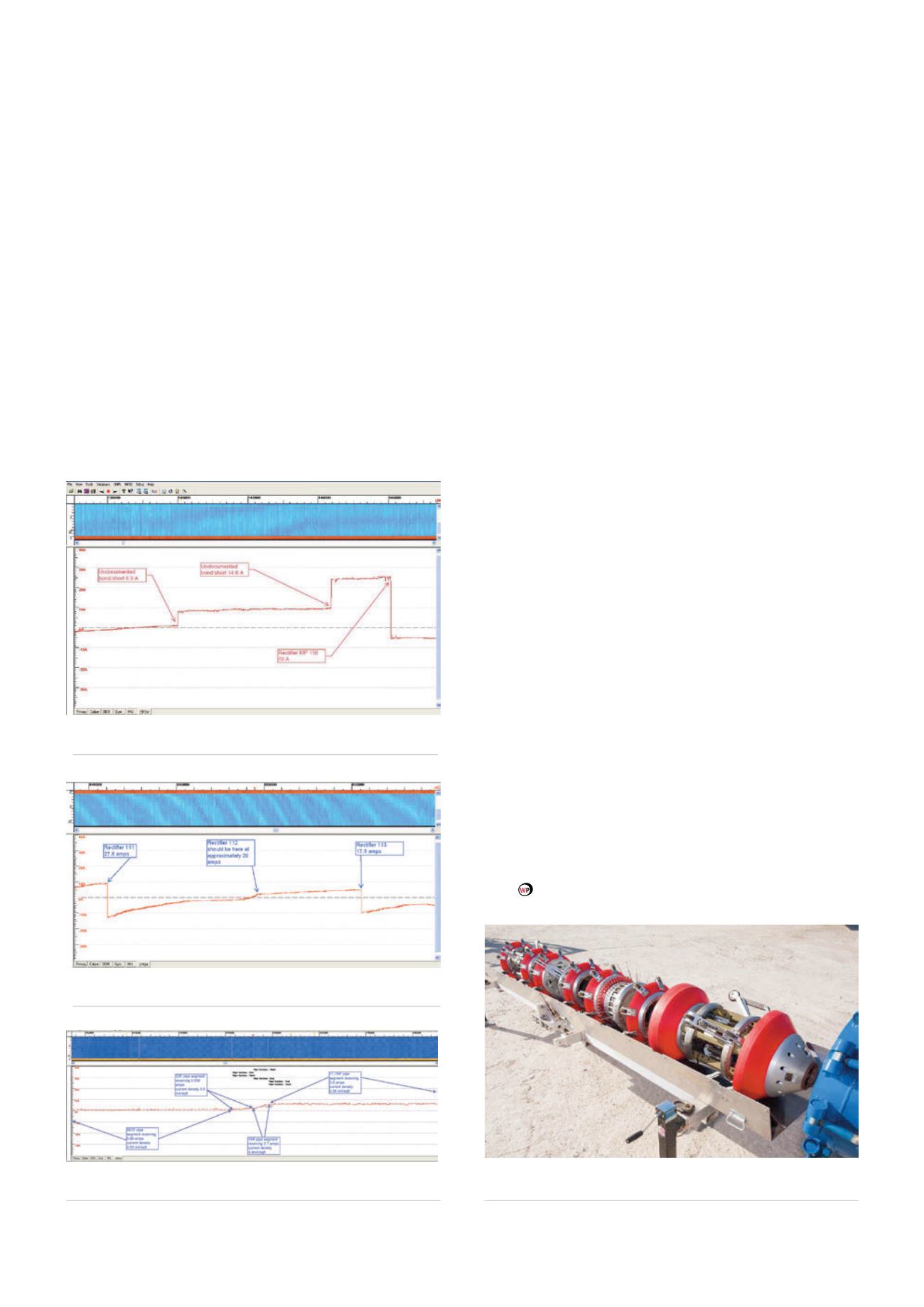
bonds existed. A CPCM inspection confirmed this suspicion
and found 27 undocumented bonds that were stealing more
than 200 amps of protective CP current away from the one
active pipeline (Figure 4).
This same inspection revealed that approximately 30%
of the current from the CP system was being wasted and
was not protecting the intended pipeline. However, it was
protecting the abandoned parallel pipelines as well as the
power company grounds due to these undocumented
bonds.
There is great value in learning that a CP installation
that had been thought to protect a particular pipeline for
many years was not found in the axial CP current data. In
this particular instance, the negative drain cable from the
rectifier was found to be connected to a different structure
rather than the intended pipeline. This condition had gone
unrecognised for many years and was only discovered
because the company looked at the new data set collected
by CPCM (Figure 5).
Another way an additional dataset like CPCM can
reduce uncertainty is by giving pipeline operators a better
understanding of the pipeline coating condition. CPCM
accomplishes this by measuring the CP current that the
pipe is receiving over a given area in real time. There is a
direct relationship between CP current density and pipeline
coating quality, except in the case of disbonded and
shielding coating. During the analysis of the axial CP current
data, the pipeline is segmented where CP current slope
changes are found.
These segments are tabulated with information listed,
such as length of segment, start and end points, surface
area and amount of CP current received. This makes it
quite easy to see, at a glance, the high and low current
density segments. The axial current plot makes it quite
simple to identify changes in coating quality, as can be
seen in Figure 6.
Importance of knowledge
As stated previously, knowledge is the key to reducing
uncertainty in the life of pipeline integrity. Using all of the
tools available to collect CP data during inspections and
testing allows operators to gain knowledge about pipelines
and pipeline CP systems, which leads to much better
decision making and reduced risk. The different datasets
that are gathered to assess pipeline integrity are useful in
reducing uncertainty when used with enhanced knowledge.
However, the datasets become much more powerful and
valuable when integrated and evaluated together in a formal
process. Axial CP current data adds one more layer of vital
information that was not available until the development of
CPCM technology. Axial CP current data can be used to help
pipeline integrity personnel better understand a pipeline
and the CP system that protects it from hazards. Keeping
people, property, and the environment safe from harm
should be our primary goal. Developing a more complete
understanding of the true condition of a pipeline and the
pipeline CP systems will allow everyone to sleep better at
night.
Figure 6.
Coating quality changes identified by current density
changes.
Figure 5.
Missing CP rectifier that was not connected as
reported.
Figure 4.
Undocumented CP bonds discovered by CPCM
inspections.
Figure 7.
CPCM tools provide another dataset to help
understand the effectiveness of a pipeline CP system.
46
World Pipelines
/
SEPTEMBER 2014


